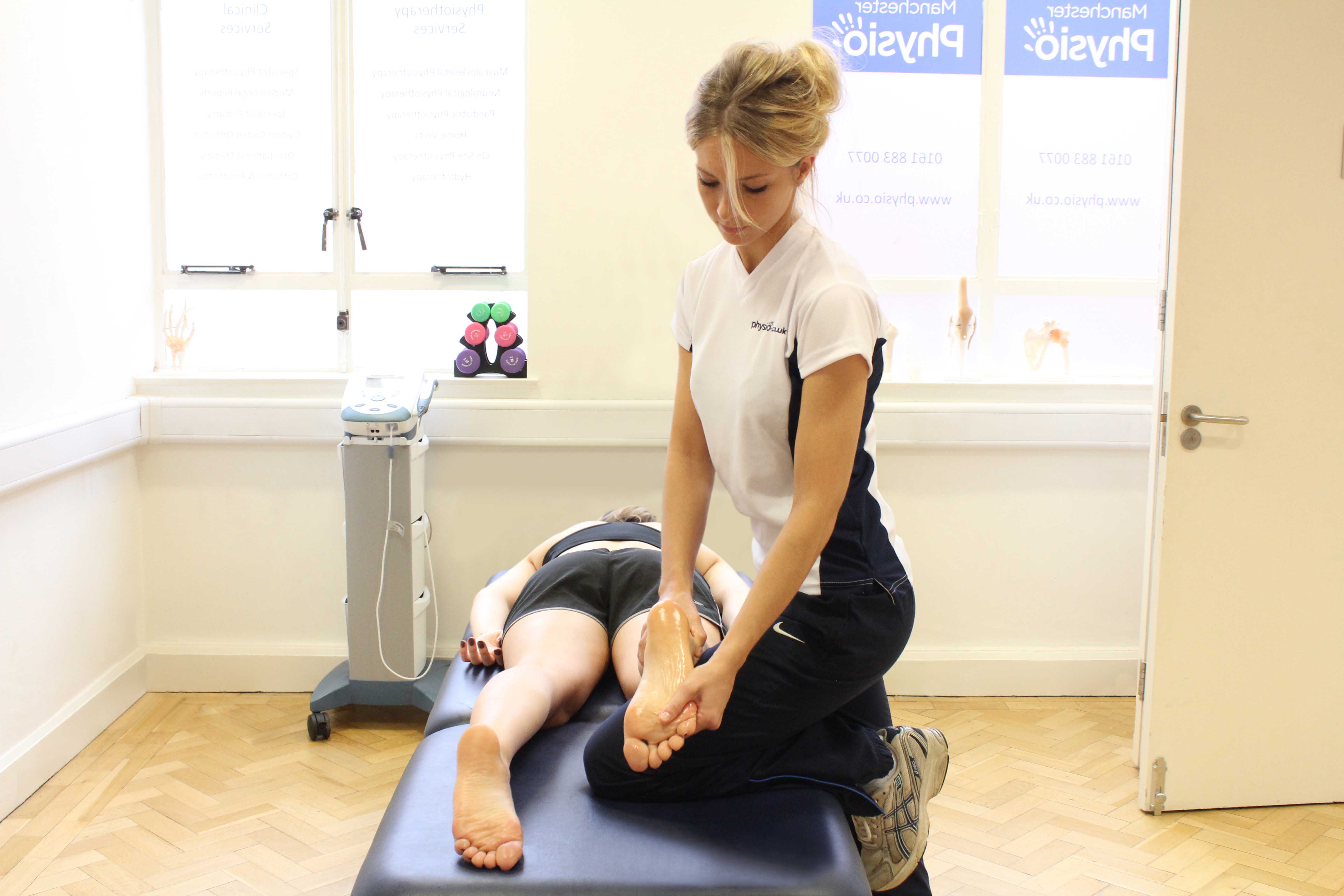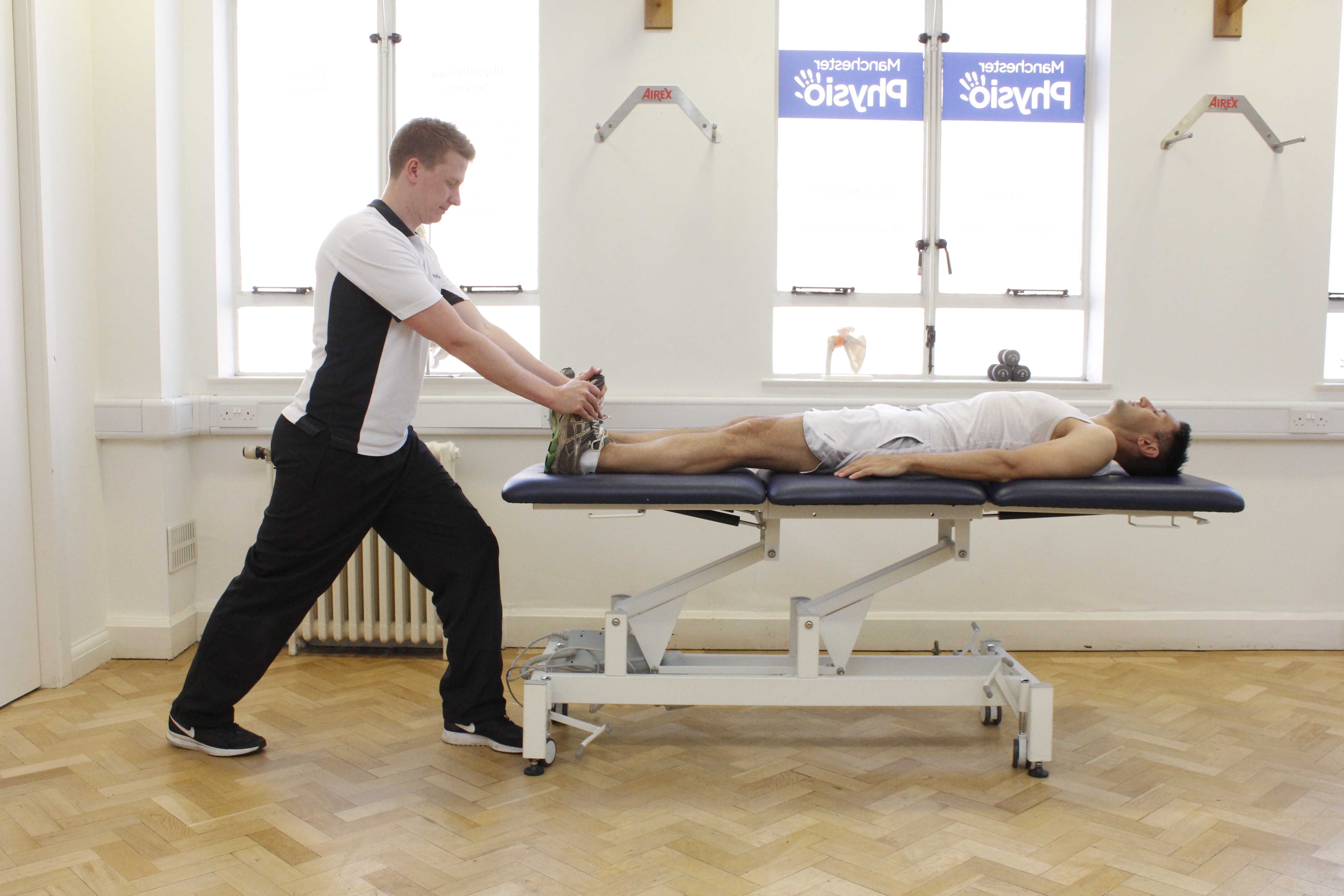What is hallux rigidus?
Hallux rigidus (also known as hallux limitus) is a condition in which the big toe has a significantly reduced range of movement. Physiotherapy is an important treatment for hallux rigidus.
How does hallux rigidus happen?
The range of motion of the big toe can gradually reduce over time due to walking and running biomechanical anomalies, leading to increased bone formation, which limits the range of motion of the joint.
 Above: Soft tissue massage of the planta fascia along the sole of the foot.
Above: Soft tissue massage of the planta fascia along the sole of the foot.What are the symptoms of hallux rigidus?
The main symptom is an obvious lack of movement in the big toe joint. Pain may also be felt with movement of the joint, in particular at the end of joint range. Activities that require movements of the joints of the big toe may cause pain (i.e. sprinting, dancing). The wearing of high-heeled shoes may also cause pain. Other symptoms include:
What should I do if I have hallux rigidus?
You should arrange an appointment with a physiotherapist. If the pain is not able to be managed using conservative measures, surgery on the joint may be necessary.
 Above: Passive stretch of the achilles tendon performed by specialist therapist
Above: Passive stretch of the achilles tendon performed by specialist therapistPhysiotherapy treatment for hallux rigidus.
The physiotherapists at Physio.co.uk can diagnose and provide treatment for hallux rigidus. Physiotherapy is focussed on reducing pain and is often performed in conjunction with podiatry treatment. If conservative management techniques fail to provide relief, the patient may be referred for a surgical opinion. Physiotherapy treatment can include:
- Wax therapy
- Stretching programmes
- Orthotics
- Electrotherapy

 0330 088 7800
0330 088 7800


































